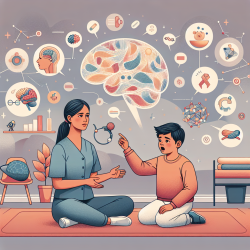Introduction
In the pursuit of enhancing educational outcomes, the significance of a conducive learning environment cannot be overstated. Recent research titled "Student’s Self-Reported Experience of Soundscape: The Link between Noise, Psychological and Physical Well-Being" sheds light on how noise in school settings affects students' well-being and learning capabilities. This blog explores the implications of these findings for practitioners in speech-language pathology and education, offering strategies to improve student outcomes by addressing noise-related challenges.
The Impact of Noise on Students
Noise in schools is more than a mere distraction; it has tangible effects on students' psychological and physical well-being. The study conducted in Québec involved 408 students from primary and secondary schools, revealing that approximately half of the students experience affective and bodily reactions to noise. These reactions can manifest as irritation, stress, and even physical discomfort, such as headaches or tension.
Understanding these reactions is crucial for practitioners aiming to create supportive learning environments. The study highlights that students who report negative affective reactions to noise are also more likely to feel these noises physically. This dual impact underscores the need for comprehensive strategies that address both the emotional and physical dimensions of noise exposure.
Strategies for Practitioners
Practitioners can play a pivotal role in mitigating the adverse effects of noise on students. Here are some strategies based on the study's findings:
- Noise Awareness Programs: Educate students and teachers about the impact of noise on learning and well-being. Awareness can lead to proactive measures to reduce noise levels.
- Acoustic Modifications: Implement changes in classroom acoustics to minimize noise interference. This can include installing sound-absorbing materials and optimizing classroom layouts.
- Coping Mechanisms: Teach students effective coping strategies, such as deep breathing or focusing techniques, to manage their reactions to noise.
- Feedback Systems: Encourage students to report noise disturbances to teachers, fostering a collaborative approach to noise management.
Encouraging Further Research
While this study provides valuable insights, it also highlights the need for further research into the subjective experiences of students regarding noise. Practitioners are encouraged to engage in or support research initiatives that explore the nuances of noise perception and its impact on different student populations.
Conclusion
Addressing noise in school environments is not just about reducing decibels; it's about enhancing the overall learning experience for students. By implementing data-driven strategies and fostering a deeper understanding of soundscapes, practitioners can significantly improve educational outcomes and student well-being. To delve deeper into the original research, please follow this link: Student’s Self-Reported Experience of Soundscape: The Link between Noise, Psychological and Physical Well-Being.










